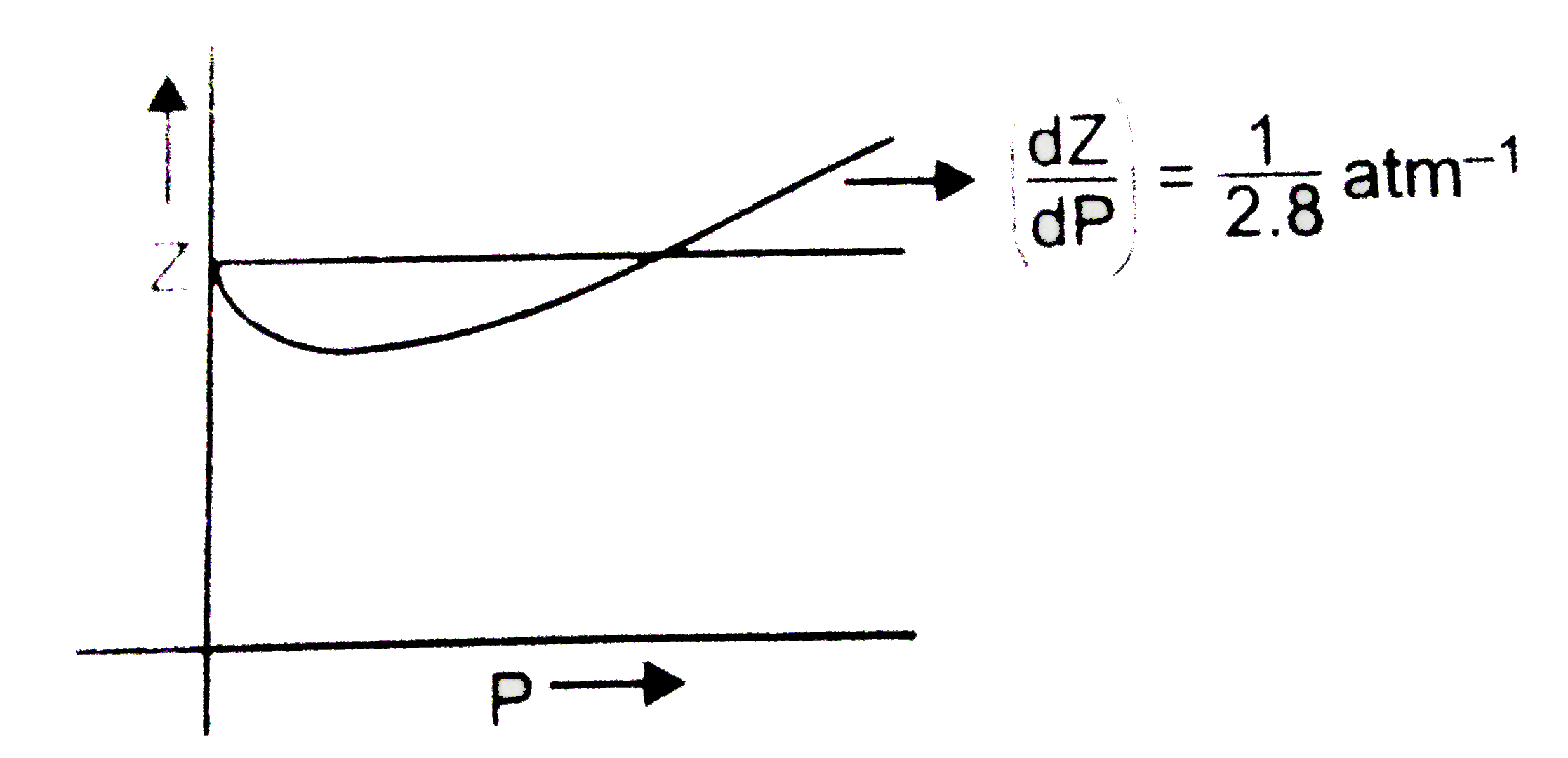The compressibility factor (Z) for one mole of a gas is more than one under S.T.P. conditions. Therefore
V>11.2L
V<22.38L
V>22.38L
V=22.38L
The correct Answer is:C
To solve the problem regarding the compressibility factor (Z) for one mole of a gas under standard temperature and pressure (STP) conditions, we can follow these steps:
1. Understand the Compressibility Factor (Z):
The compressibility factor Z is defined as:
Z=PVnRT
where:
- P = pressure
- V = volume
- n = number of moles
- R = universal gas constant
- T = temperature
2. Identify the Condition Given:
The problem states that Z>1 under STP conditions. This implies that the gas does not behave ideally.
3. Interpret the Meaning of Z>1:
- For an ideal gas, Z=1.
- When Z>1, it indicates that the gas occupies a volume greater than what is predicted by the ideal gas law. This suggests that the gas is less compressible than an ideal gas.
4. Relate Z to Volume:
Since Z is directly proportional to the volume when pressure and temperature are constant, if Z>1, it implies:
V>nRTP
Under STP (Standard Temperature and Pressure), n=1 mole, R=0.0821L atm K−1mol−1, T=273.15K, and P=1atm.
5. Calculate the Ideal Volume at STP:
The ideal volume for one mole of an ideal gas at STP is:
Videal=nRTP=(1mol)(0.0821L atm K−1mol−1)(273.15K)1atm≈22.4L
6. Conclusion:
Since Z>1, it implies that the actual volume of the gas is greater than 22.4 L. Therefore, the volume of the gas under these conditions must be greater than the ideal volume.
Final Answer:
Thus, if the compressibility factor Z for one mole of a gas is more than one under STP conditions, it indicates that the volume of the gas is greater than 22.4 L.
---
The compressibility factor Z is defined as:
Z=PVnRT
where:
- P = pressure
- V = volume
- n = number of moles
- R = universal gas constant
- T = temperature
The problem states that Z>1 under STP conditions. This implies that the gas does not behave ideally.
- For an ideal gas, Z=1.
- When Z>1, it indicates that the gas occupies a volume greater than what is predicted by the ideal gas law. This suggests that the gas is less compressible than an ideal gas.
Since Z is directly proportional to the volume when pressure and temperature are constant, if Z>1, it implies:
V>nRTP
Under STP (Standard Temperature and Pressure), n=1 mole, R=0.0821L atm K−1mol−1, T=273.15K, and P=1atm.
The ideal volume for one mole of an ideal gas at STP is:
Videal=nRTP=(1mol)(0.0821L atm K−1mol−1)(273.15K)1atm≈22.4L
Since Z>1, it implies that the actual volume of the gas is greater than 22.4 L. Therefore, the volume of the gas under these conditions must be greater than the ideal volume.
Thus, if the compressibility factor Z for one mole of a gas is more than one under STP conditions, it indicates that the volume of the gas is greater than 22.4 L.
Similar Questions
The value of compressibility factor (Z) for an ideal gas is
View SolutionThe compressibility factor Z for the gas is given by
View SolutionThe compressibility factor (Z) for a gas is less than one.What does it signify ?
View SolutionCompressibility factor under critical state of a gas is
View SolutionCompressibility factor under critical state of a gas is
View SolutionThe compressibility factor of a gas is greater than unity at STP. Therefore
View SolutionThe graph of compressibility factor (Z) vs. P for one mole of a real gas is shown in following diagram. The graph is plotted at constant temperature 273K. If the slope of graph at very high pressure (dZdP) is (12.8)atm−1 , then calculate volume of one mole of real gas molecules (in L/mol)
Given : NA=6×1023 and R=22.4273LatmK−1mol−1
 View Solution
View SolutionState the following: S.T.P conditions.
View SolutionThe critical pressure PC and critical temperature TC for a gas obeying van der Waal's equation are 80 atm at 87∘C. molar mass of the gas is 130 g/mole. The compressibility factor for the above gas will be smaller than unity under the following condition:
View SolutionWhat is molar volume of an ideal gas under N.T.P. conditions ?
View Solution
